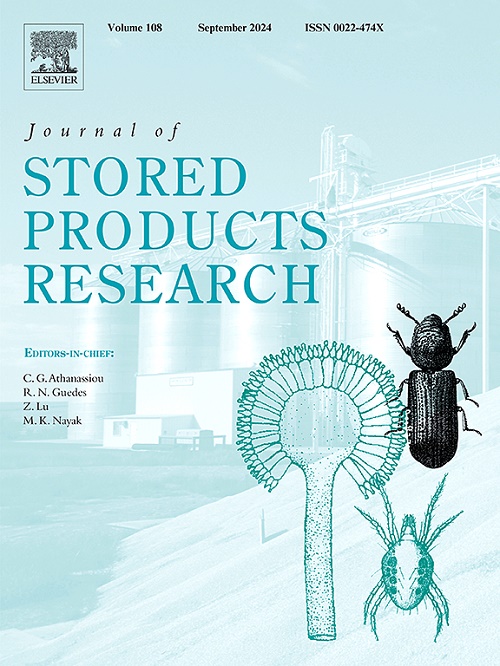The choice of maize (Zea mays L.) storage facility among farmers in the Sissala East District in northern Ghana: What are the determinants?
IF 2.7
2区 农林科学
Q1 ENTOMOLOGY
引用次数: 0
Abstract
Maize (Zea mays L.) is crucial to food security in Ghana but is characterized by high postharvest losses (PHLs) resulting from the use of traditional storage structures. As poverty and food insecurity are rampant in northern Ghana, improved storage of maize, a staple food, is vital for boosting household food security. This study analyzed factors influencing farmers’ choice for improved maize storage facilities in the Sissala East District, a vital supplier of maize to neighboring districts in the Upper West Region and Ghana at large, where maize farming is the main source of income for farmers. Twenty-one communities and 132 maize farmers were surveyed. A multi-stage sampling technique was employed: purposive selection of the communities followed by a random selection of maize farmers from each community. Traditional storage facilities are still prevalent, while most farmers use small facilities with a maximum stocking capacity of 50 bags of 100 kg of maize. Many farmers used Corchorus olitorius (jute) sacks, while only five communities had a common warehouse. Regression results show that smallholder farmers with access to extension services were more likely to use improved storage facilities like warehouses, silos, and improved barns and storerooms. Farm characteristics such as farm size and productivity were strong determinants of the choice of an improved storage facility. Also, socio-economic factors such as age of the farmer, number of years in farming (experience), and access to non-farm income sources were associated with the use of improved maize storage facilities. PHLs, as a share of the average output of maize harvested per annum, were higher for farmers using traditional storage than improved storage. Extension services on improved methods of maize storage to boost adoption, improve maize productivity, and increase food availability are recommended. Community warehouses should be constructed. Sensitization on the extent of PHLs should be emphasized.
求助全文
约1分钟内获得全文
求助全文
来源期刊
CiteScore
5.70
自引率
18.50%
发文量
112
审稿时长
45 days
期刊介绍:
The Journal of Stored Products Research provides an international medium for the publication of both reviews and original results from laboratory and field studies on the preservation and safety of stored products, notably food stocks, covering storage-related problems from the producer through the supply chain to the consumer. Stored products are characterised by having relatively low moisture content and include raw and semi-processed foods, animal feedstuffs, and a range of other durable items, including materials such as clothing or museum artefacts.

 求助内容:
求助内容: 应助结果提醒方式:
应助结果提醒方式:


